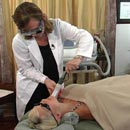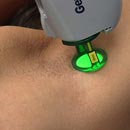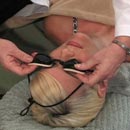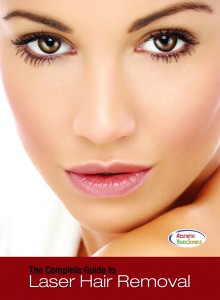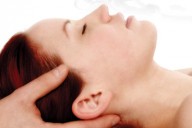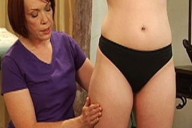Laser Hair Removal Training Information
0Laser hair removal is one of the most commonly done cosmetic treatment for removing unwanted hair by means of exposure to pulses of concentrated laser light beam that destroy the hair follicle. Pigment in the hair follicles absorbs the light. This hair removal procedure has been commercially available since the mid-1990s. Laser hair removal is widely practiced in dermatology clinics and medical spas.
Types of Lasers:
There are several types of lasers used for hair removal. The laser types are characterized by the medium use, which may be a gas (eg argon, krypton, carbon dioxide) or solid (eg ruby, neodymium:yttrium-aluminium-garnet, alexandrite) and the specific wavelength produced by the light. The wavelength is measured in nanometers (nm). ‘Laser’ is an acronym: light amplification by the stimulated emission of radiation.
Argon: 488 nm (Turquoise/Cyan) or 514.5 nm (Green) (no longer used for hair removal)
Ruby: 694 nm (Deep Red) (no longer used for hair removal)
Alexandrite: 755 nm (Near-Infrared) (safe and effective on all skin types, Fitzpatrick I-VI)
Pulsed Diode Array: 810 nm (Near-Infrared)
Neodymium YAG (Nd:YAG): 1064 nm (Near-Infrared)
Intense Pulsed Light (IPL): 400-1200 nm (Not a laser- broad spectrum)
Complications of Dermatological Laser and Intense Pulsed Light Treatment (IPL)
Dr Vishal Madan, MD, MRCP – Consultant dermatologist for the The British Association of Dermatologists explains about complications of Dermatological Laser and Intense Pulsed Light Treatments.
Lasers emit light with single wavelength and in order for the light to have an impact on human tissues; it must be absorbed by a target (chromophore) within the tissue. Laser light is usually fired at high energy or fluence, and its interaction with the specific target chromophore generates heat, which results in selective destruction of the target (selective photothermolysis). For skin lasers common targets include water, hemoglobin, melanin and tattoo ink. Despite being selective for the target chromophores, complications arise from collateral extension of heat to surrounding tissues and to competing targets. This results in injury to structures and tissues which were not the intended targets of the laser beam resulting in adverse events.Complications arising from laser treatments are primarily due to: lack or deficiency of core knowledge of laser-tissue interaction on the part of laser operator, overzealous or inappropriate treatment, and very importantly improper patient selection. Notwithstanding, some side effects are common, expected and self-limiting and it is important that the laser operator is familiar with such phenomena in order to educate the patient of their expected occurrence.Most medical lasers and indeed many used for treating “cosmetic” skin conditions belong to Class 4; the most dangerous class of lasers which have the potential to burn the skin and importantly to cause permanent eye damage and blindness. Such lasers may also represent a fire risk. Whilst most laser-tissue interaction is a result of the direct impact of the laser beam, indirect injury from reflections of the beam can also cause significant harm. For this reason, the setting and laser environment is critical and must comply with strict laser protection rules.Intense pulsed light (IPL) differs from lasers by emitting a broad spectrum of light which is not coherent. Restrictive “cut off” filters are used to narrow the broad wavelength window in order to achieve a meaningful response to the skin condition being treated. IPL devices are extremely popular by virtue of their versatility in treating a range of dermatological indications. The common applications of IPL devices include laser hair reduction, treatment of vascular and pigmented lesions and skin rejuvenation. Unlike lasers, IPL does not identify a specific target chromophore. This can result in non-specific heating of the surrounding skin thus increasing the likelihood of adverse events, which confounds the widespread notion that they are actually “safer” than lasers.Below are the complications associated with use of lasers and IPL in treatment of skin conditions, including hair reduction.
2. Fire hazard – high intensity laser beams can ignite clothing, hair or oxygen tubes. It is therefore recommended that when operating in the vicinity of combustible material, saline soaked gauze is readily available.
3. Injury to the skin
b. Hyperpigmentation (darkening of pigmentation) – The skin pigment melanin is the desired laser target in certain conditions. However, sub-lethal energy to cells which produce melanin (melanocytes), can be innocent bystanders after any skin laser and IPL treatment. Both selective lasers such as Q switched laser treatments for tattoo removal and certain non-selective laser treatments such as ablative laser resurfacing and IPL can result in increased pigmentation (hyperpigmentation) and darkening which can be temporary to long-standing. This risk is highest in patients with darker skin types and for this reason, test patches are recommended before proceeding with laser and IPL treatments in these patient groups. Additionally sun avoidance and appropriate sun protection should be strictly enforced.
c. Hypo and depigmentation (loss of pigment resulting in pale or white areas) – Stunning of the melanocytes by heat energy from various laser and IPL sources may result in hypopigmentation and lethal damage to these cells manifests as depigmentation. Such pigmentary alteration is more challenging to treat and can be permanent. Inability of the skin to acquire a tan on subsequent sun exposure means that damage to melanocytes has ensued. Test patches, whilst not confirmatory may guide and alert the practitioner of this potential complication.
d. Burns and Blisters – This is usually a manifestation of high laser and IPL energy, missed tan or lack of protection of the epidermis by cooling or a combination of the above. Prolonged and painful blistering may be sign of incipient scarring.
e. Infection – Broken skin after laser injury can be a portal of entry for infective organisms. Both bacterial and fungal skin infections have been reported after laser treatments. Patients undergoing laser and IPL treatments around the mouth may suffer from reactivation of cold sores.
f. Bruising – is usually self-limiting and seen after vascular laser treatments such as the pulsed dye laser.
g. Prolonged redness -is a rare complication of laser resurfacing and IPL procedures.
h. Milia – these are tiny skin colored cysts which may form after certain resurfacing procedures.
4. Worsening of pre-existing skin condition/s
Patients undergoing laser and IPL treatments for acne or rosacea may experience a flare of their skin problems after treatment. Such patients should be warned of this risk and should be managed with appropriate therapies during the course of laser treatment.
Darkening of tattoos is a phenomenon which is observed after treatments of certain colored tattoos. This paradoxical darkening can be challenging to remove.
Paradoxical hypertrichosis refers to increased hairgrowth following laser hair reduction procedures. The exact cause remains unknown.
5. Infection risk for the operator – Laser treatment generates splatter of tissue and laser plume (smoke generated during some laser treatments) has been found to contain viruses such as human papilloma virus. If the plume is inhaled, there is potential of development of respiratory or laryngeal warts. To avert this side effect, appropriate laser masks should be worn by the practitioner/s.
It is important that health care professionals are properly educated and trained in laser hair removal procedures.
Mark B. Taylor, M.D. and Christine Whitelaw, M.D. teach doctors how to properly perform laser hair removal treatments. You can learn their techniques in The Complete Guide to Laser Hair Removal. Laser training is provided through online video streaming or DVD.
Mark B. Taylor, M.D. is a world-renowned dermatologist and cosmetic laser surgeon who has been in practice for over thirty years. He is a leader in the field of cosmetic laser surgery, pioneering and teaching many new laser techniques to over 4,000 doctors worldwide.
Christine Whitelaw, M.D., is the owner and medical director of Spaquena Day Spa in the Louisville, Kentucky area. She oversees all medical treatments, including laser hair removal, mesotherapy, sclerotherapy, laser collagen treatments, and photorejuvenation treatments.
Mark B. Taylor, M.D. and Christine Whitelaw, M.D., demonstrate how to perform laser hair removal on the face, underarms, back, bikini area, and legs, with demonstrations on male and female models with different Fitzpatrick types. The procedural demonstrations employ both IPL and a combined Alexandrite/YAG laser machines. They also discuss the different laser options, benefits and contraindications, hair growth cycle, treatment regimens, and procedure guidelines.
Laser Hair Removal Training – How To Use IPL and YAG Laser
Click here to see a video sample video clip of laser hair removal techniques.
Testimonial: “Let me just say this up front, I love Aesthetic VideoSource… The videos are top notch, professionally done, and show you hands on techniques. They are the ‘go to’ source in the industry due to the quality of their products.” — Deb
To learn more:
Watch instant video streaming online or purchase a DVD.
The Complete Guide to Laser Hair Removal (run time: 1 Hr. 44 Mins.) can be ordered online or by calling 801-282-2490 . Shop now
Aesthetic VideoSource also has a 1 year unlimited online video streaming subscription to train yourself or train your staff. The subscription will give you unlimited online access to the library of online training videos for 1 year.
Download the new online Aesthetic VideoSource catalog – Educational online videos and DVDs for Spa, Beauty & Medical Professionals.
Contains public sector information licensed under the Open Government License v2.0.
